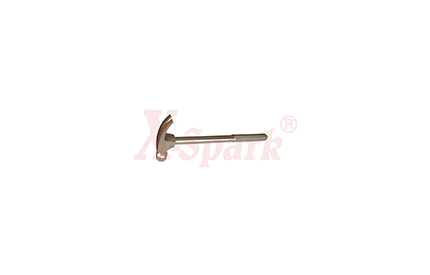Use Hand Tools Safely
Most people have not been trained before using hand tools, which leads to frequent accidental injuries. According to statistics, the injuries caused by improper use of hand tools account for 7% to 8% of all accidental injuries every year. Therefore, it is necessary to understand the correct use of various commonly used hand tools and portable electric tools, maintain and manage them well, and pay attention to safe use.
①The wrench of appropriate size should be selected according to the nature of the work.
②When using the adjustable wrench, force should be applied to the fixed side, never force to the movable side.
③If the wrench opening is worn or slipped during use, it should not be used anymore to avoid slipping and hurting your hands.
④Do not use a wrench as a hammer to strike.
⑤Do not put a pipe on the end of the wrench to increase the torque of the wrench.
①Pliers are only used to fasten, insert and remove various pins and nails, and to cut or tighten various wires.
②Pliers cannot be used to tighten or knock bolts or nuts.
③Do not beat or lengthen the handle of the pliers to increase the clamping or cutting power.
1)The direct factor of injury caused by hand tools
①Impact or impact: The used tool flies out of control or loses the balance of the body, causing it to hit the worker or nearby colleagues.
②Cut: Cut by the cutting edge, burr, or sharp corner of the tool.
③Splash: The substances produced during work, such as cutting chips, chemical solvents, etc., splash out and damage the body, eyes, or skin of workers or others.
④Electric shock: electric shock accidents caused by electric tools.
2)Causes of injury caused by hand tools
①Use improper hand tools.
②Failure to maintain in accordance with regulations.
③Failed to check according to regulations before use.
④The method used is incorrect.
⑤Not wearing appropriate personal protective equipment.
⑥ Improper storage location of tools.
3)The principle of using hand tools
①Choose hand tools that are suitable for work needs.
②Keep the tools in good condition.
③Choose hand tools with good materials.
④Check the hand tools before use.
⑤ Use hand tools in the correct way.
⑥Hand tools should be placed in a safe place.
⑦Appropriate protective equipment should be worn before work.
⑧Choose standard tools or prescribed hand tools.
(1) When carrying hand tools, they should be carried in a special belt or tool bag or tool bucket, not in the pocket of clothes, let alone inserted in the belt.
(2) For tools that are not used temporarily, the storage location should be appropriate, and the placement should be stable, so that they are not easy to fall off and hurt people, and do not place them on scaffolding, overhead pipes, and mechanical moving parts.
(3) Operators should pass tools hand by hand, do not throw; when passing tools with sharp edges, the handle should be directed towards the person receiving the tool.
(4) For tools such as crowbars that need to be carried on the shoulder, pay attention to the front, back, left, and right when carrying them, so that they do not collide with other objects and people, and they should be put down firmly.
(5) When carrying portable power tools with flexible cords, pay attention to protect the cords and keep them away from sharp objects, heat sources, oils, or solvents to avoid damage to the cords.